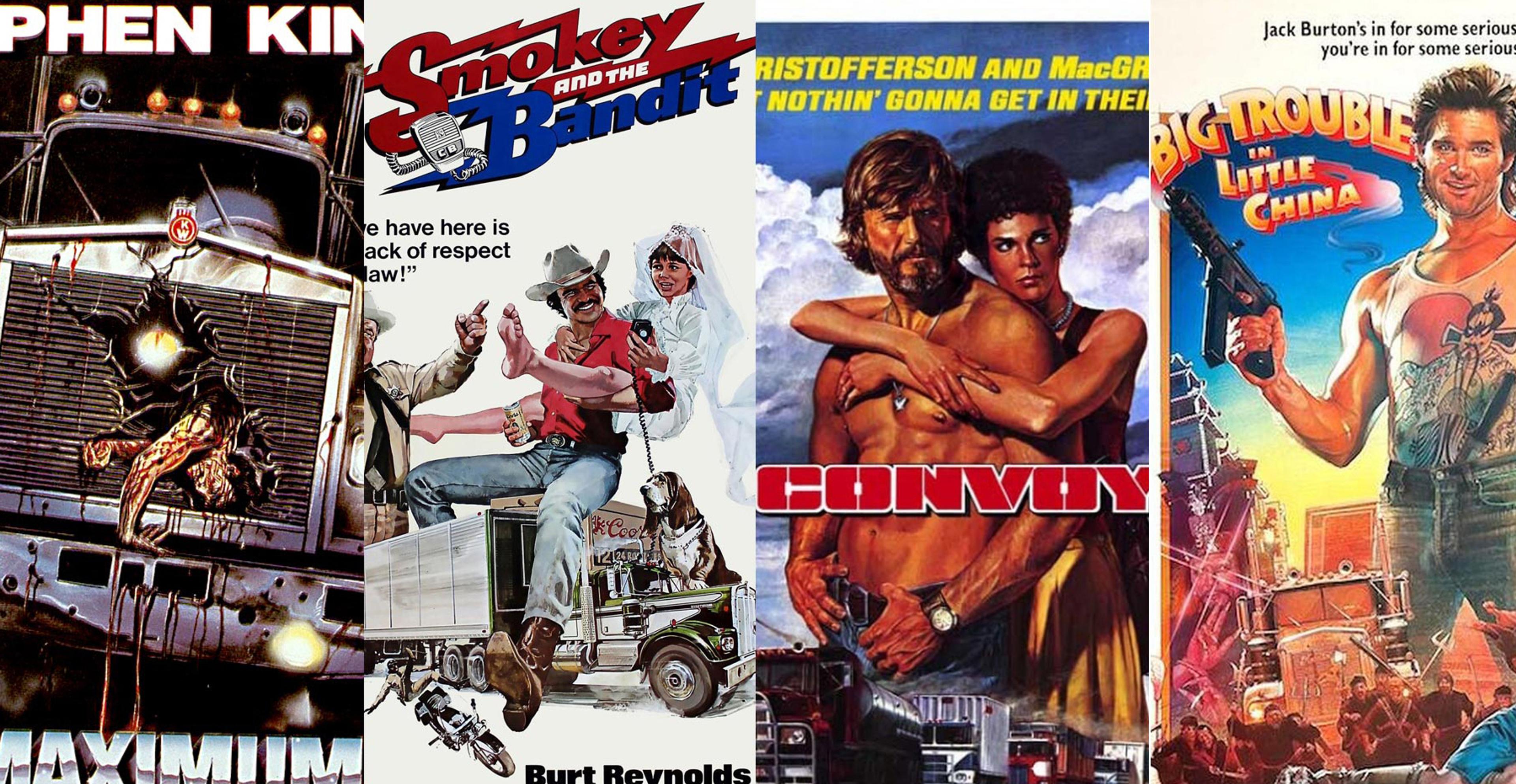
Is Truck Driving a Good Career? Here’s 8 Reasons Why
Professional trucking is a great career, and today it is better than it ever was. Technology and industry advancements have changed the day-to-day job for the average professional truck driver for the better. Gone are the days of achy hips and knees from shifting gears, paper HOS logs and shipping documents, fighting for a parking space, and being routed to places drivers don’t like to go. With cell phone apps and digital workflows, a day on the road has become a more enjoyable experience than previous years.
Trucks move more than 72% of the freight in the United States by weight. According to the American Trucking Association’s U.S. Freight Transportation Forecast to 2022, the US could see a 24% increase in freight tonnage this year. Trucking freight has continued to see more volume along with more opportunities. Road freight accounts for the largest segment of the United States supply chain spend, expanding by 23.4% in 2021 to $821 billion.
Digital documents
Paperwork is a hassle, especially in the cab of a truck. Not only is it difficult to keep organized, but it also adds the task of administrative work to the professional truck driver’s unwritten job description.
Now there are electronic bills of lading (eBOL) and other digital documents allow carriers, brokers, shippers, receivers, and other parties exchange paperwork faster, more accurately, and securely. The truck driver isn’t expected to return to the terminal days or weeks later with proof of delivery, bills of lading, lumper receipts, and other records essential to carriers producing an invoice.
As a bonus, no one will have to try to decipher handwritten documents. When invested in the right hardware and software, companies can receive, digitize, sign, and catalog shipping documents. This also reduces the risk of errors and phone calls to address problems.

Electronic logging devices
The electronic logging device (ELD) mandate requires most over-the-road professional truck drivers and fleets to use automatically record off-duty and on-duty data. Used instead of paper logs, this use of technology has allowed professional truck drivers to better their schedules, run easier distances, and the ability to manage their own internal clocks.
ELDs have GPS, cellular network, and cloud computing capabilities. This reduces the need for check-calls and makes it easy to generate automated exception alerts. The technology also allows drivers and carriers to share their location, ETA, and availability of driving time. This level of visibility allows all parties to prepare for the arrival of trucks and drivers.
A simple app
Smartphones are used by many every day for work, including nearly 90% of professional truck drivers. In addition to navigation, phone calls, and texts, carriers have mobile apps to help their drivers manage documents, hours of service, and other businesses. However, it seems like there is an app for everything and many users are cutting back on how many they download. Smartphone users spend 85% of their time on just five apps, so having one simple platform with one point of access is most ideal.
McLeod is ITS Logistics’ transportation management system for planning, routing and dispatch that increases operational efficiency, improves the professional driver experience, and delivers a clearer data evaluation. The software is also the main source for all data evaluation save specific measure with the trucks (i.e. miles per gallon). This helps to keep vehicle capacity, business requirements, customer requests, and every key detail of an operation top of mind. McLeod is used in conjunction with Omnitracs, a telecommunications software that gives us the ability to track assets and communicate with drivers in near real time.
Digital freight matching
Automated freight booking gives the professional truck driver a “book now” button on loads posted to load boards. The broker posts a set rate and terms and when the carrier accepts the load, the shipment details and documentation are sent electronically to the driver. The load is then tracked on an app on the driver’s mobile phone, with status and exception alerts coming in via text or email.
This allows an entire workflow including load tenders, shipping documents, digital data extraction, load visibility, invoicing, and expedited payment processing to be handled through a centralized platform.
Netflix, but for loads
As automated freight matching evolves and more data is collected about professional truck drivers, brokers could start providing curated load options automatically. Like Netflix for loads, drivers can use the search function to find a show but can also log in to see what’s streaming and suggest similar interests.
Brokers can provide load information based on driver preferences for lanes, rates, locations, and other factors. When used in combination with other tech like ELD and location data, it can also suggest loads that fit in with a driver’s duty status. When a carrier has the right equipment, in the right place, and the driver has hours available to work, a rate and terms can be auto-generate to fit the driver’s liking.
Great pay and quick training
As supply chains have reached a pinnacle of stress, the importance of the professional truck driver has come to light more than in previous years. For those up to the task of hauling goods across the states, it can be a rewarding profession that anybody can get into no matter their age. The trucking industry figures that there are about 60,000 jobs available nationwide. With demand on consumer ecommerce, that figure is not expected to decrease any time soon.
In the past, great-paying professional truck driving jobs went to experienced drivers or those hauling certain types of materials. In today’s high demand industry with excellent growth potential, it’s not unusual for most professional drivers to be earning a six-figure salary. An emphasis for salary increases centers on clean driving records and miles driven or years on the road, as opposed to taking years of training like other careers.
Obtaining a commercial drivers license (CDL) to drive a truck can take as little as three weeks or as long as six months. On average, CDL training can be completed in about seven weeks when enrolled in a full-time driving school. At ITS Logistics, drivers go through a three-day Road to Success training program to ensure they are well-equipped to hit the road.

Be your own boss, be home daily
Professional drivers can either get a trucking job with a logistics provider like ITS or buy their own truck and be their own boss as an owner-operator. About one in nine professional truck drivers in the United State are owner-operators, which means they are responsible for filling their trucks with the freight of their choosing. This allows the driver to set their own schedule and experience the freedom of entrepreneurship.
One of the downsides to being an owner-operator is the cost of maintaining an expensive piece of equipment. Most commercial drivers will start out working for carriers to gain experience. With many choices, it’s good to research the company before committing to employment. At ITS Logistics, professional truck drivers receive generous home time, 70 hours of PTO the first year, pay for driving experience, national healthcare coverage, 401k, and are welcomed into a culture full of appreciation for the hardest working people on the road.
Veterans make great professional drivers
Truck driving is a perfect career for military veterans because the teamwork, discipline, organization, and leadership skills gained in the armed forces translate perfectly to this job. ITS Logistics is proud to be a partner of Veterans in Trucking, an organization that strives to honor those who once served our country and now serve our country behind the wheel of a truck.
More than 13 percent of the ITS truck driving workforce are military veterans-Army, Navy, Airforce, Marines, the National Guard, and the Reserves-and they have share that it is a great post-service career choice. Here are a few of the skills they call out as the most transferrable from their time in the military:
- Self-discipline and structure: As a truck driver, you are responsible for completing things like pre- and post-trip inspections, chaining, loading, and unloading deliveries, and problem-solving out on the road. Being disciplined and detail-oriented is a must to ensure success in the logistics industry.
- Dependability and responsibility: Driving a truck is not something that can be micromanaged, so it’s important to be dependable and able to stay on time and on task in ever-changing conditions.
- Situational awareness: This is extremely important in the military and in a career as a professional truck driver. When driving a semi-truck and trailer that can weigh up to 80,000 pounds, being aware of its surroundings at all times is key to staying safe on the road.
Is Truck Driving a Good Career with ITS Logistics?
A truck driving career is better today than it ever was in previous years. With the shortage of truckers nationwide, professional drivers have automatic job security and many choices of employment. At ITS, we are seeking experienced drivers to join our team. We offer competitive pay and benefits, a 401k option with company match, national healthcare coverage, generous home time, dedicated freight, paid vacation, and holidays-and most importantly, respect.
If you think you have what it takes to join the ITS team as a company driver, check out our current job openings and apply or contact us at (866) 303-2518 and one of our friendly recruiters will reach out to you within 24 hours.



